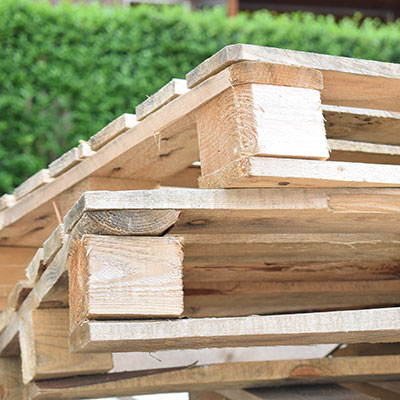
Pallet gardening is becoming a trend for many home-owners, but few are aware of how to go about it. While the flexibility gained by gardening on pallets is unparalleled and unrivalled by any other popular means, there are a few things gardeners need to know before introducing them to their homes. Let's take a look at some things to keep in mind when pallet gardening.
Do Have a Design in Mind
Many pallet gardeners make the mistake of simply stocking up on a bunch of unused, unwanted pallets from nearby industrial outlets without any prior consideration into the overall design that's being made. This is one of the worst mistakes a prospective pallet gardener can make. When designs aren't at the forethought of a gardener's mind, then they're probably just going to end up as makeshift piles of wood across various parts of the garden without any real appreciation for the aesthetics of a pallet design. Gardeners need to understand how the overall look of a pallet garden is meant to flow in their own gardens before they start stocking up.
Do Reuse Pallets
Reusing pallets as part of a pallet garden is an eco-friendly way to help keep otherwise usable waste out of public landfills, but it's important for gardeners to know where their pallets are coming from. There are many pallets in circulation that are simply meant to be used for storage only. That is, they're not suitable for transport. These aren't the safest options and gardeners should be aware of the safety logos associated with pallets. That is, pallets should each contain some form of safety stamp that ensures operators they're safe to load and handle within an industrial setting. This will help gardeners by ensuring their loads, namely plants that can be quite heavy with potted soil that only increase in weight when watered, won't collapse the pallet and create a potentially dangerous situation when it comes to moving and repairing pallets.
Don't Use Damaged Pallets
One of the biggest woes associated with pallet gardening is the fact that gardeners will often come across damaged pallets in their hunt for free or low cost pallet options. Unfortunately, these should be regarded as unusable. While many pallets will come across as having usable parts, any significant cracks or caves will cause the structural integrity of the pallet to decrease tremendously. When this happens, gardeners need to be aware that damage is likely to spread, which can cause the entire pallet to collapse and require replacing. This can be both dangerous and ultimately end up being very poor value for gardeners.
Do Be Aware of Contaminants
Pallets are used during the shipping process and hold packaged goods from point A to B. What's being shipped, though, can range from anything from soft furnishings through to pesticides, chemicals, food, and other things that might be detrimental to the gardening process. This is particularly difficult to establish since it's difficult to trace pallets to any one particular origin, but gardeners can make informed decisions by collecting pallets from reputable sources (industrial sites that don't handle large amounts of chemicals, etc.) or by purchasing them brand new.
Don't Use Extra Heavy Pallets
Extra heavy pallets should be a warning sign to prospective gardeners. These are likely to have held contaminants such as gas cylinders or other chemical products. Similarly, gardeners should avoid any oily, smelly, or generally unkempt pallets as these are likely to cause issues further down the line and are best avoided altogether. Wood is porous and will both absorb and release what is contained on it: chemicals are a definite no-no for gardening.
Do Be Aware of Limitations
While pallets are an excellent way to garden on a budget, they also have limitations. This applies particularly to the depth of roots, which make pallets unsuitable for anything with depths exceeding eight inches. Many perennial flowers are suitable for pallet use, but may poorly establish themselves due to the limited availability of soil beneath them. For this reason, annuals are often the preferred choice of flowers for pallet gardeners. Fruits and vegetables can also be suitable choices, but again, gardeners need to pay particular attention to their root structures in order to choose the best ones for the application. Berries tend to make excellent choices.




